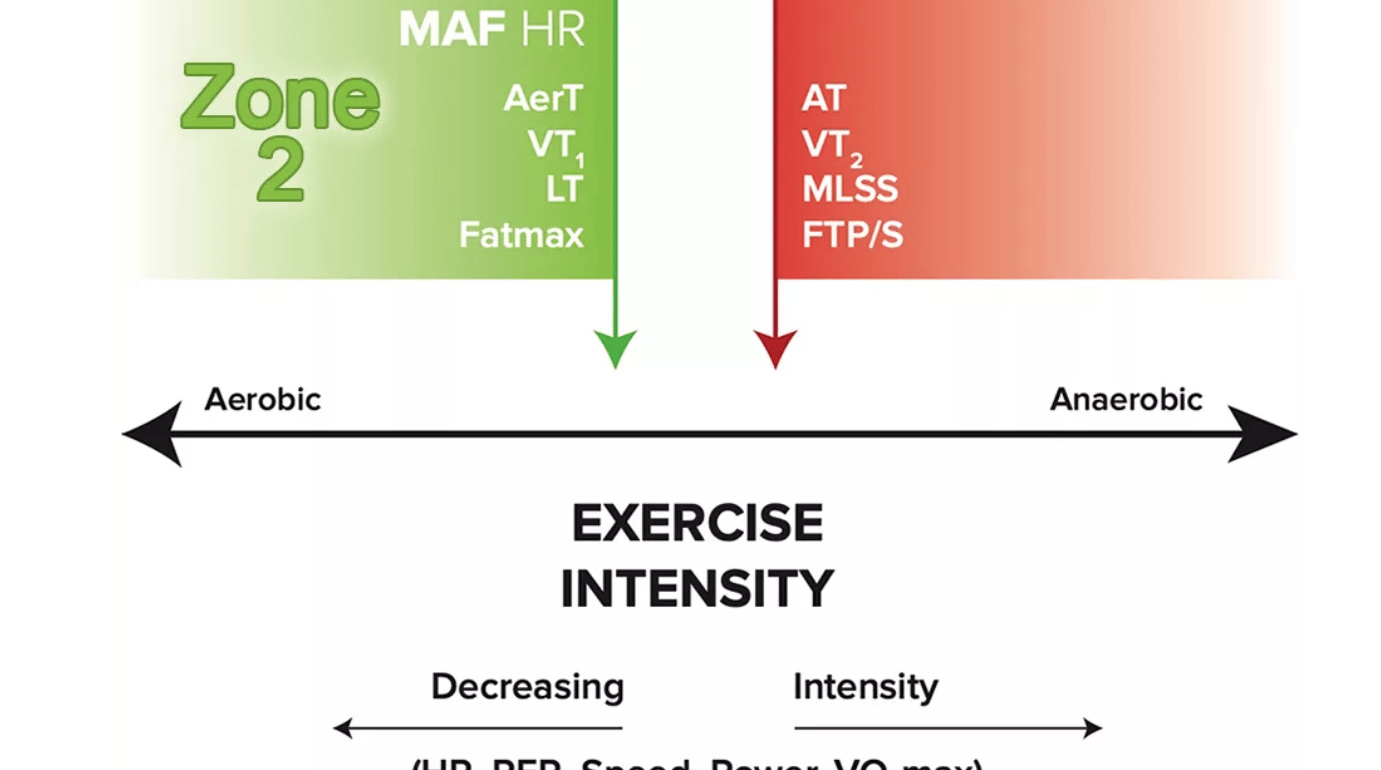Zone 2 Heart Rate: How to Calculate Your Fat-Burning Zone
Learn how to calculate your zone 2 heart rate for optimal fat burning and endurance. Science-backed guide with examples, benefits, and common training mistakes.
HEALTH AND FITNESSDIY GUIDESMOTIVATION
10/8/202510 min read


So you've probably seen every fitness influencer on TikTok talking about zone 2 training like it's some newly discovered secret to looking like Chris Hemsworth. Plot twist: it's not new, and it's definitely not a secret. Elite athletes have been doing this forever. We're all just late to the party.
But here's the thing. Most people doing zone 2 cardio are doing it wrong. They're going too hard, thinking "more intensity equals better results," and completely missing the point. Then they wonder why they're not seeing the fat-burning, endurance-building benefits everyone's raving about.
I used to be that person. I'd hop on the treadmill, crank it up to what felt challenging, and assume I was nailing my zone 2 workout. Turns out I was spending most of my time in zone 3 or 4, which is a completely different stimulus. Once I actually calculated my zone 2 heart rate and stayed in it, everything changed.
What You're Getting Here
Exactly how to calculate zone 2 heart rate (multiple methods)
Why zone 2 training is trending and what it actually does
The real zone 2 cardio benefits backed by science
How to stay in zone 2 without constantly checking your watch
Common mistakes that sabotage your results
What is Zone 2 Training?
Zone 2 training is low-intensity cardio where your heart rate sits between 60% and 70% of your maximum. At this intensity, your body primarily burns fat for fuel instead of carbohydrates. You can hold a conversation (though you might need to pause occasionally), you're working but not suffering, and you can sustain it for a long time.
Think of it as the Goldilocks zone. Not so easy that you're barely working, not so hard that you're gasping for air. Just right for building your aerobic base and turning your body into a fat-burning machine.
The Science Behind Zone 2
When you exercise in zone 2, your body is working aerobically, meaning it's using oxygen to produce energy. At this intensity, fat becomes the primary fuel source because your body has plenty of time to break down fat molecules into usable energy.
Go harder (zone 3 or above), and your body switches to burning primarily carbohydrates and glycogen because they convert to energy faster. That's fine for short, intense efforts, but it's not sustainable for long periods and doesn't train your body to efficiently burn fat.
Zone 2 cardio also triggers specific adaptations that make you fitter:
Increases mitochondrial density (more cellular power plants)
Improves capillary density (better blood flow to muscles)
Enhances fat oxidation (you become a better fat burner)
Builds aerobic base without excessive stress or fatigue
The beauty of zone 2 training is that it's sustainable. You can do it multiple times per week without wrecking yourself. Unlike HIIT, which requires serious recovery time, zone 2 lets you rack up volume without feeling like you got hit by a truck.
How to Calculate Zone 2 Heart Rate
Here's where most people get lost. There are a few ways to calculate zone 2, and they give slightly different numbers. Let's break them down.
Method 1: Max Heart Rate Formula (Simplest)
This is the easiest method and works fine for most people.
Step 1: Calculate your max heart rate
220 minus your age = Max Heart Rate
Example: If you're 35 years old
220 - 35 = 185 bpm max heart rate
Step 2: Calculate your zone 2 range
Zone 2 = 60% to 70% of max heart rate
For our 35-year-old:
Lower end: 185 × 0.60 = 111 bpm
Upper end: 185 × 0.70 = 130 bpm
Zone 2 heart rate range: 111 to 130 bpm
Use our zone 2 heart rate calculator tool to get your personalized range instantly without doing the math yourself.
Method 2: Heart Rate Reserve (More Accurate)
This method accounts for your resting heart rate, making it more personalized. It's called the Karvonen formula.
Step 1: Find your max heart rate (220 minus age)
Step 2: Find your resting heart rate
Measure your pulse first thing in the morning before getting out of bed. Count beats for 60 seconds. Most people are between 60 to 100 bpm at rest.
Step 3: Calculate heart rate reserve
Max HR minus Resting HR = Heart Rate Reserve
Step 4: Calculate zone 2
(Heart Rate Reserve × 0.60) + Resting HR = Lower end
(Heart Rate Reserve × 0.70) + Resting HR = Upper end
Example: 35-year-old with resting HR of 65 bpm
Max HR: 185 bpm
Heart Rate Reserve: 185 - 65 = 120
Lower end: (120 × 0.60) + 65 = 137 bpm
Upper end: (120 × 0.70) + 65 = 149 bpm
Zone 2 range: 137 to 149 bpm
Notice this gives a higher range than the basic formula. If you're well-conditioned with a low resting heart rate, this method is more accurate.
Method 3: Talk Test (No Math Required)
Don't have a heart rate monitor? Use the talk test. During zone 2 cardio, you should be able to speak 3 to 5 words at a time before needing to breathe. You can hold a conversation, but it's slightly challenging.
If you can sing Taylor Swift's entire discography without pausing, you're too easy (zone 1). If you can barely grunt out one word, you're too hard (zone 3 or higher).
The talk test isn't precise, but it's surprisingly effective for most people. Your body knows when you're in that sweet spot.
Zone 2 Training Benefits (Why Bother?)
Okay, so you're going slower than you're used to. What's the point? Here's what zone 2 training actually does for you.
Burns Fat More Efficiently
Zone 2 teaches your body to preferentially burn fat for fuel. Over time, you become a better fat burner even at rest. This is why endurance athletes can go for hours without bonking, they've trained their bodies to tap into fat stores efficiently.
For fat loss specifically, zone 2 cardio is incredibly effective because you can sustain it for long durations (45 to 90+ minutes) without excessive fatigue. More time working equals more total calories burned.
Builds Aerobic Endurance Without Burnout
Want to run a marathon? Hike for hours? Play with your kids without getting winded? Zone 2 training builds your aerobic base, which is the foundation for all endurance activities.
Unlike high-intensity training that leaves you demolished for days, zone 2 is gentle enough to do 3 to 5 times per week. You can stack volume without constantly feeling exhausted or needing epic recovery protocols (though cold exposure for recovery can definitely help on harder training days).
Improves Mitochondrial Function
This sounds nerdy, but it matters. Mitochondria are the power plants of your cells. More mitochondria and better-functioning mitochondria mean more energy production and better endurance.
Zone 2 cardio specifically stimulates mitochondrial biogenesis (creation of new mitochondria). Over weeks and months, you literally build more cellular machinery for producing energy. That translates to better stamina in everything you do.
Lowers Resting Heart Rate
A lower resting heart rate is a sign of cardiovascular efficiency. Your heart doesn't have to work as hard to pump blood. Regular zone 2 training can drop your resting heart rate by 5 to 10 beats per minute over a few months.
This isn't just a cool stat. A lower resting heart rate is associated with better cardiovascular health and longevity. Your heart is literally getting stronger and more efficient.
Increases Capillary Density
Zone 2 increases the number of capillaries (tiny blood vessels) in your muscles. More capillaries mean better oxygen delivery and nutrient transport. Your muscles become better at extracting oxygen from blood, making you more efficient during any physical activity.
Best Zone 2 Cardio Examples
So what actually counts as zone 2 cardio? Pretty much any steady-state activity where you can control your intensity.
Running/Jogging: This is probably the most popular. For most people, zone 2 is a conversational jog, not a hard run. You might feel like you're going embarrassingly slow. That's normal. Check your ego at the door.
Cycling: Great for zone 2 because it's low-impact and easy to control intensity. Indoor cycling on a trainer makes it even easier to dial in your exact heart rate zone.
Rowing: Full-body workout that's joint-friendly. Keep the intensity steady and watch your heart rate.
Incline Walking: Walking on a treadmill at 3 to 5% incline will get most people into zone 2 without needing to run. Perfect if you have joint issues or just hate running.
Swimming: If you can swim efficiently, this is excellent zone 2 work. Just make sure you're not going too hard trying to prove something to the person in the next lane.
Hiking: Especially uphill hiking. Nature, fresh air, and zone 2 training all in one. Just monitor your heart rate on the climbs so you don't drift into zone 3.
Elliptical: Lower impact than running, easy to control resistance and pace. Set it to a moderate level and stay consistent.
Pick whatever you'll actually do consistently. The best zone 2 cardio is the one you don't dread.
How Long Should You Do Zone 2 Training?
Minimum effective dose: 30 to 45 minutes per session, 2 to 3 times per week.
Optimal for most people: 45 to 90 minutes per session, 3 to 4 times per week.
Elite athlete territory: Multiple hours per week, sometimes 80% of total training volume.
If you're just starting, begin with 30-minute sessions and gradually build up. The adaptations from zone 2 training are cumulative. Consistency over weeks and months matters more than crushing yourself in one heroic session.
Use our zone 2 calculator to figure out your target heart rate, then aim to stay in that range for your entire workout. It's harder than it sounds.
Common Zone 2 Training Mistakes
Mistake 1: Going Too Hard
This is the big one. Most people can't handle going slow. They feel like they're wasting time if they're not suffering. So they push the pace, drift into zone 3 or 4, and wonder why they're not getting the fat-burning, aerobic benefits of true zone 2.
Fix: Check your ego. Use a heart rate monitor. Stay in your range even if it feels ridiculously easy.
Mistake 2: Not Going Long Enough
Zone 2 training benefits come from sustained effort. If you're only doing 20 minutes, you're barely scratching the surface. Your body needs time in that zone to trigger the adaptations.
Fix: Build up to at least 45 minutes per session. 60 to 90 minutes is even better if your schedule allows.
Mistake 3: Never Doing Anything Harder
Zone 2 should be the foundation of your training, but it shouldn't be the only thing you do. You still need higher-intensity work (zone 4 and 5) to build power, speed, and top-end fitness.
Fix: Follow the 80/20 rule. About 80% of your cardio in zone 2, about 20% at higher intensities. This is what elite endurance athletes do.
Mistake 4: Ignoring Recovery
Even though zone 2 cardio is low-intensity, you still need recovery. Doing it 7 days a week without rest will eventually catch up to you, especially if you're also lifting weights or doing other training.
Fix: Take at least 1 to 2 full rest days per week. Consider active recovery methods like light stretching, walking, or cold exposure protocols on off days.
Mistake 5: Constantly Checking Your Watch
If you're obsessively staring at your heart rate monitor every 10 seconds, you're not present in your workout. You're also probably stressing yourself out, which ironically can raise your heart rate.
Fix: Glance at your monitor occasionally to make sure you're in range, but don't fixate. Learn what zone 2 feels like in your body. After a few weeks, you'll instinctively know when you're there.
Your Next Steps
Stop guessing whether you're training in zone 2 or not. Here's what to do:
Step 1: Calculate your zone 2 heart rate using one of the methods above. Use our zone 2 heart rate calculator if you want it done instantly.
Step 2: Get a heart rate monitor. A chest strap is most accurate, but a wrist-based monitor (like an Apple Watch or Garmin) works fine for most people.
Step 3: Pick your activity. Running, cycling, rowing, whatever you'll actually do consistently.
Step 4: Do a test session. Start your activity and get into your zone 2 range. Notice how it feels. You should be working but comfortable. You can talk but it takes some effort.
Step 5: Schedule 2 to 3 zone 2 sessions per week for the next month. Track how you feel. Monitor your resting heart rate. Notice if your endurance improves.
The benefits of zone 2 training are real, but they're subtle and cumulative. You won't feel radically different after one session. Give it 4 to 6 weeks of consistent training and watch what happens.
Stop doing cardio that leaves you wrecked. Start training in zone 2. Build your aerobic engine. Become a fat-burning machine. It's not sexy, but it works.
Frequently Asked Questions
What is zone 2 heart rate?
Zone 2 heart rate is 60% to 70% of your maximum heart rate, typically between 110 to 150 bpm depending on age and fitness level. At this intensity, your body primarily burns fat for fuel and you can sustain exercise for extended periods. To calculate your zone 2, use the formula: (220 minus your age) × 0.60 for the lower end and × 0.70 for the upper end. For a more accurate calculation, use a heart rate reserve method or our free calculator.
How do I calculate my zone 2 for cardio?
To calculate zone 2 for cardio: First, find your max heart rate (220 minus your age). Then multiply by 0.60 for the lower end and 0.70 for the upper end. Example: 40-year-old has max HR of 180 bpm, so zone 2 is 108 to 126 bpm. Alternatively, use the Karvonen formula which factors in resting heart rate for more accuracy. Zone 2 should feel like a conversational pace where you can talk but need to breathe between sentences.
What are the benefits of zone 2 training?
Zone 2 training benefits include: increased fat burning efficiency, improved mitochondrial function, enhanced aerobic endurance, lower resting heart rate, increased capillary density, and better cardiovascular health. Unlike high-intensity training, zone 2 is sustainable for long durations (45 to 90+ minutes) and can be done 3 to 5 times weekly without excessive fatigue. It builds your aerobic base, which improves performance in all endurance activities and daily life tasks.
How long should I do zone 2 cardio?
For zone 2 cardio, aim for 45 to 90 minutes per session, 3 to 4 times weekly for optimal results. Beginners can start with 30-minute sessions twice weekly and gradually increase. The adaptations from zone 2 training are cumulative and require sustained time in the zone. Sessions shorter than 30 minutes provide minimal benefit. Elite athletes often spend 80% of their training volume in zone 2, sometimes totaling 10+ hours weekly.
What is the best zone 2 cardio exercise?
The best zone 2 cardio exercise is whichever one you'll do consistently. Popular options include jogging, cycling, rowing, incline treadmill walking, swimming, and hiking. Cycling and rowing are excellent because they're low-impact and easy to control intensity. Incline walking works well for people with joint issues. Choose an activity where you can maintain steady effort for 45 to 90 minutes without stopping and where monitoring your heart rate is practical.
Can zone 2 training help with fat loss?
Yes, zone 2 training is highly effective for fat loss because your body primarily burns fat at this intensity. You can sustain zone 2 for long durations (60 to 90 minutes), leading to significant total calorie burn. Additionally, zone 2 improves your body's ability to oxidize fat, making you a more efficient fat burner even at rest. For best results, combine zone 2 cardio with proper nutrition and some higher-intensity training (80% zone 2, 20% higher intensity).




